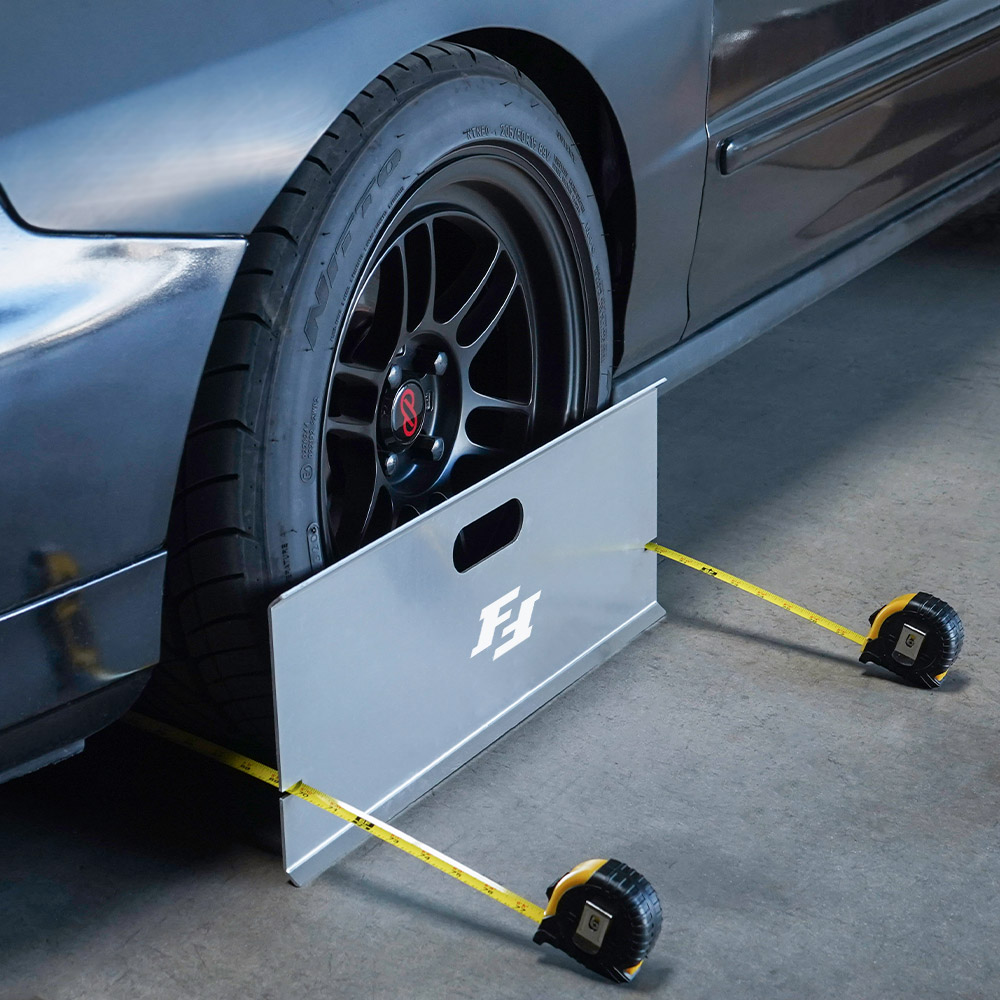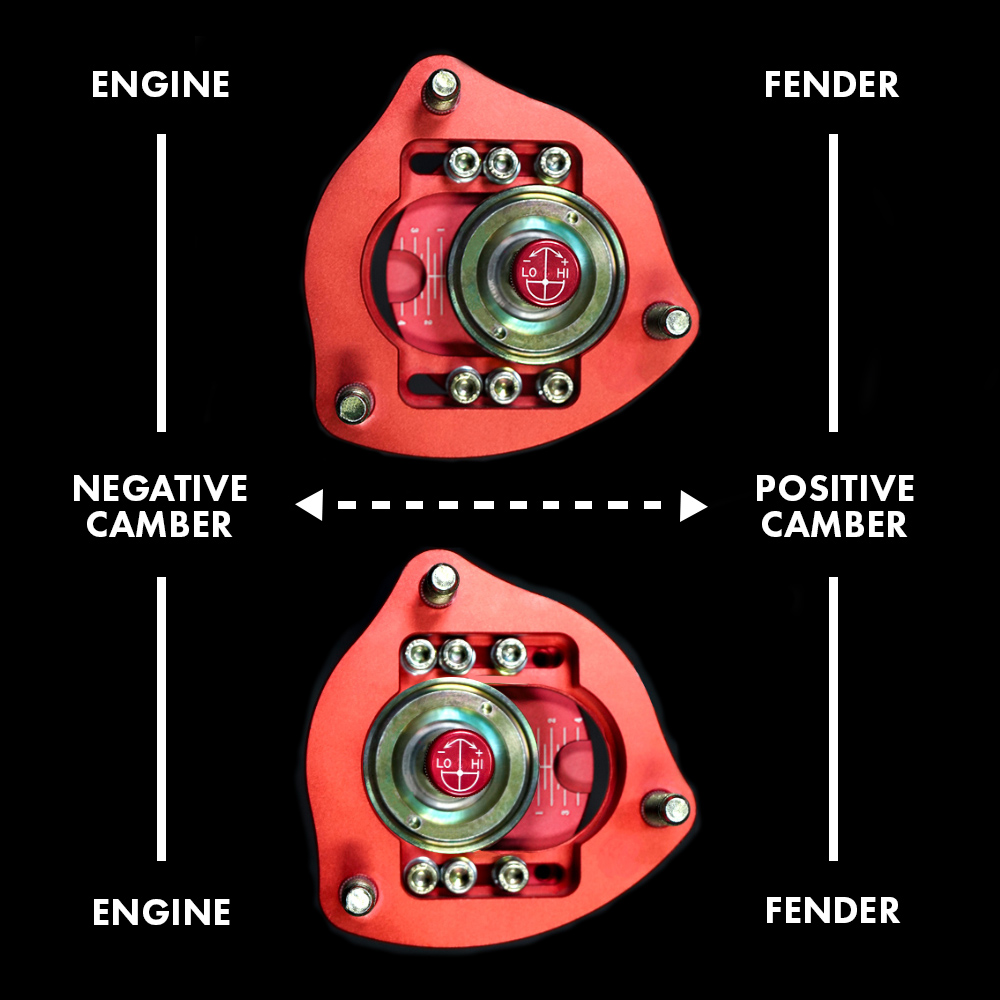– WHEEL ALIGNMENT –
The importance of an alignment is too often overlooked and misunderstood. The alignment affects the driving characteristics, tire wear, and must go hand-in-hand with all the other components on your vehicle. There are general recommendations out there that you can follow to prevent unusual tire wear or handling, but tuning for some real performance requires you to dig into the details.
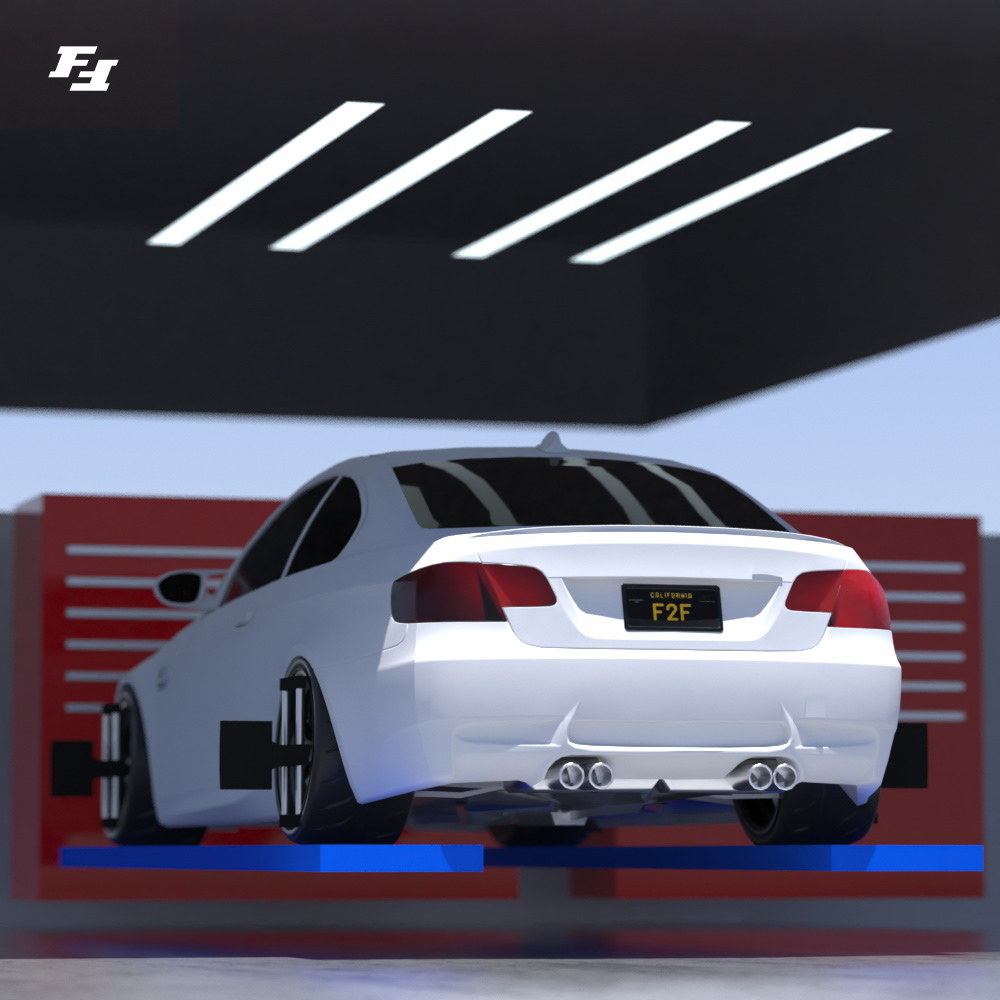
THE BASICS – TOE, CAMBER, AND CASTER
Before getting into alignment setup details, first you need a good grasp of what areas of adjustment are available to you.
TOE ALIGNMENT
Toe refers to the direction that the wheels point when looking from a top-down view. So if the front of the wheels are closer to each other than the rear of the wheels, as if the front edges are pointing toward each other, then this is toe-in. If the wheels appear to be pointing away from each other, then this is toe-out.
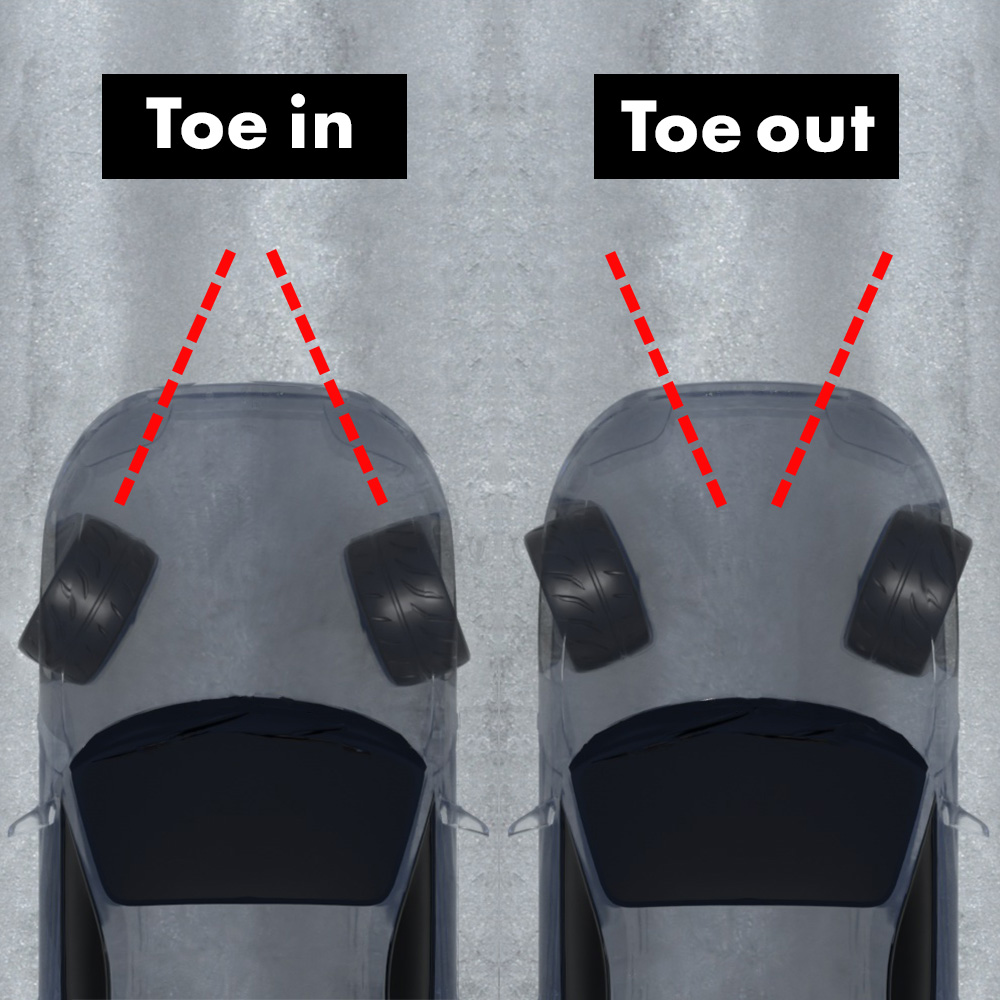
Toe can be adjusted on the front wheels with ease, while some cars require aftermarket equipment to enable rear toe adjustments. Typically, toe-in helps with stability to keep the wheels tracking straight, but can also lead to understeer. Toe-out can help the wheels turn with quicker response, but in turn may add oversteer. This is largely due to the effects of Ackerman steering, which gives the inside wheel in a turn a sharper angle than the outside wheel. This aids in steering because the inside wheel is traveling along a tighter radius than the outside wheel in any given corner. Also, due to the effects of acceleration and braking, a vehicle’s toe can change. For example, acceleration tends to pull the wheels in the direction of toe-out.
So how should you set up your vehicle’s toe for your car alignment? It all depends on what you want to do with it. Most manufacturers recommend slight toe-in for both the front and rear, because it is easier to control. But in a motorsports environment, you may look toward neutral toe or even toe-out to help with responsiveness. Even if you want the front toe set up to encourage steering response, it’s generally recommended to maintain toe-in on the rear wheels for the straight-line stability.
Front toe is typically adjusted with the tie rods on the front wheels, and the rear wheels with eccentric bolts or the suspension arms, if the vehicle has rear toe adjustment available. If you’re setting up the toe on your own, remember that most cars are very sensitive to small changes. To that end, make toe adjustments by only a millimeter or sixteenth of an inch at a time and test the results. Also avoid any extreme setups, for most cars only a couple millimeters or sixteenths of an inch on each side should be plenty. Going beyond this prevents the tires from easily tracking straight, leading to reduced straightaway speeds and increased tire wear.
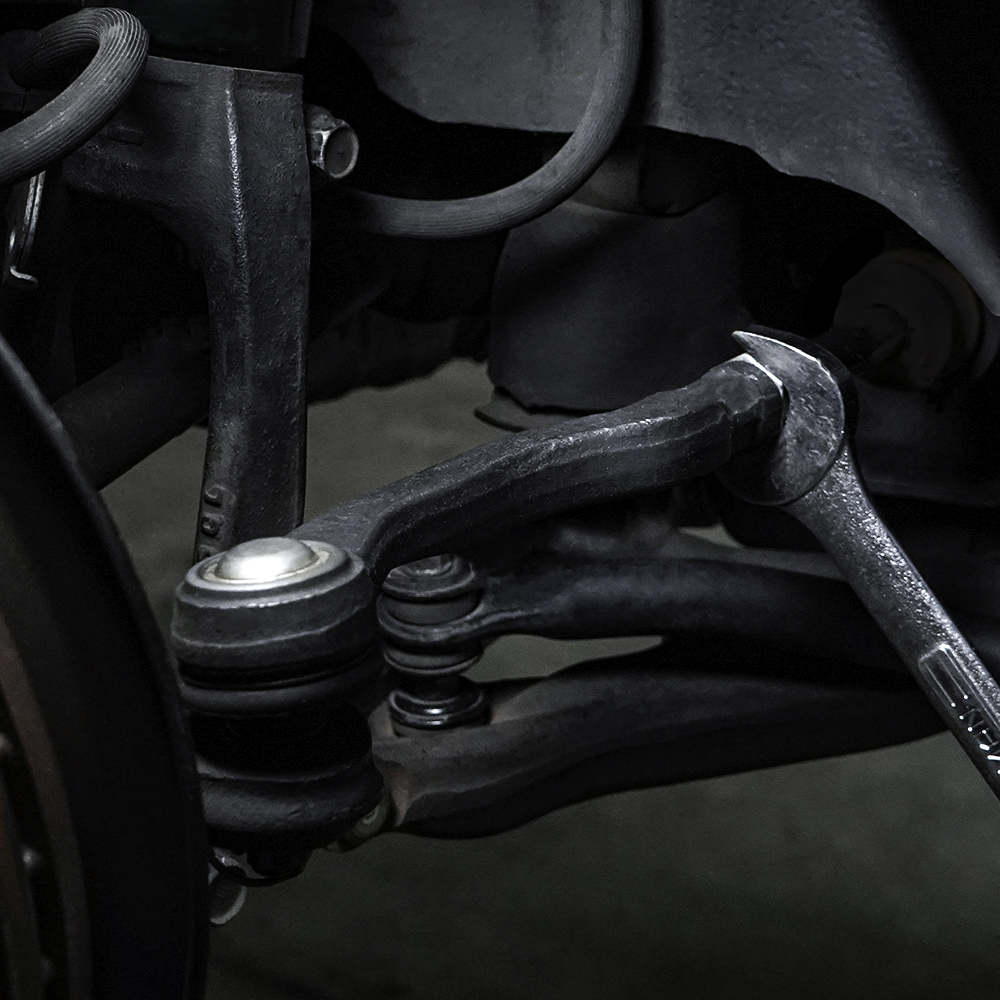
CAMBER ALIGNMENT
When looking at the wheels head-on, the angle at which they tilt is the camber. If the top edge of the wheel is tilted inward toward the center of the car, the wheel is set up with negative camber. If the top of the wheel tilts outward away from the center of the car, then this is positive camber, which is actually very uncommon.
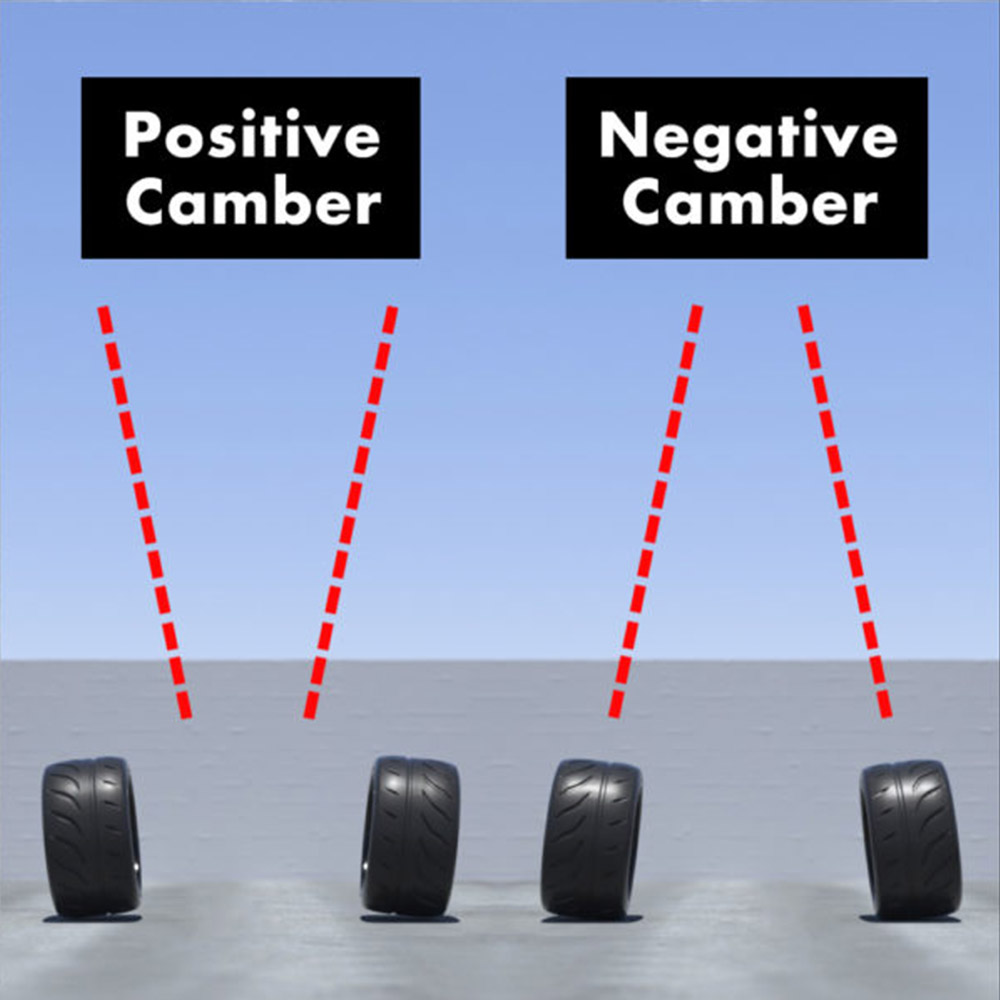
Camber helps utilize the full tread width of your tires to grip the road when cornering. You might think that setting the wheels straight up and down would be ideal, but when you introduce cornering forces, the tire gets pulled away from the direction that it is trying to turn. Add suspension geometries to the mix, and you’ll find some real benefits to increasing the negative camber of a wheel to better adhere to the road, utilizing the entire tread width.
[Setup Tip: Use a probe-type pyrometer to measure the temperatures of the outside, middle, and inside of each tire immediately after a hard lap. Ideally, the temperatures will read a total variance of about 20-degrees Fahrenheit from inside to outside. If you see a greater difference, it is usually due to under- or over inflation, or an incorrect camber setup. If the tire is hotter in the center, reduce the tire pressure. If it is hotter on the sides, then increase the tire pressure. If it is excessively hot on the inside, then reduce the negative camber. If it is too hot on the outside, add negative camber.]
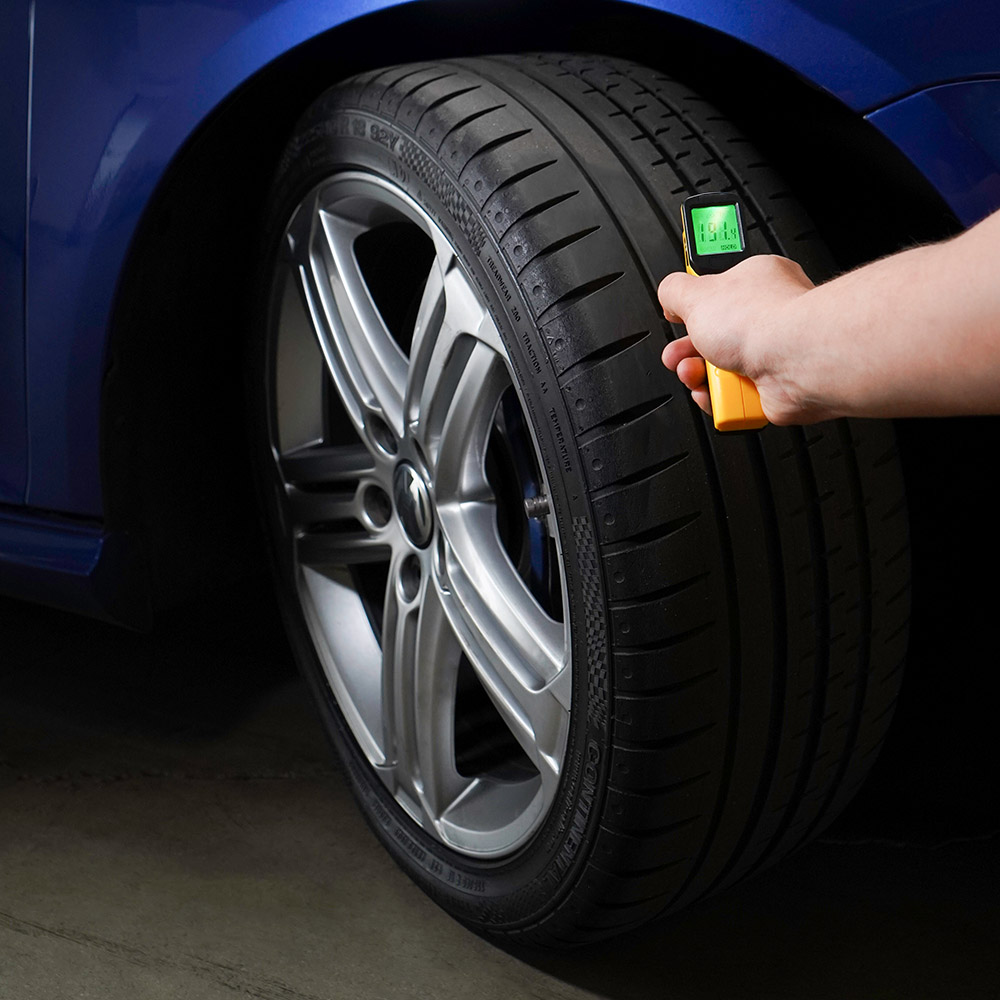
Generally, negative camber increases response and cornering grip. To this end, many cars from the factory have equal or more rear camber than the front, to reduce any chance of oversteer. For a track setup, however, many cars run half a degree to a full degree more negative camber on the front wheels. This ensures extra response and grip on the front, and allows the back end to rotate itself around the corner. This wheel alignment setup is inherently asking for oversteer to an extent, so make small changes, test methodically, and work within your limits.
Camber settings are very dependent on tire selection, suspension components, and driving style. Most cars that drive exclusively on the street may sit comfortably at -1 to -1.5 degrees of camber, while more aggressive setups for the track reach -2 to -3 degrees of camber. There are many different ways to adjust camber, all depending on the platform and any aftermarket components being used. Eccentric bolts, adjustable control arms, and camber plates are all popular methods of adjusting camber angles.
CASTER ALIGNMENT
Caster is the axis on which the wheel steers. If the bottom of the suspension sits forward of the top of the suspension, then this is positive caster. If the bottom of the suspension sits behind the top of the suspension, then this is negative caster. You see this a lot with shopping cart front wheels, motorcycles, or anything else that appears to have the steering pivot at an angle.
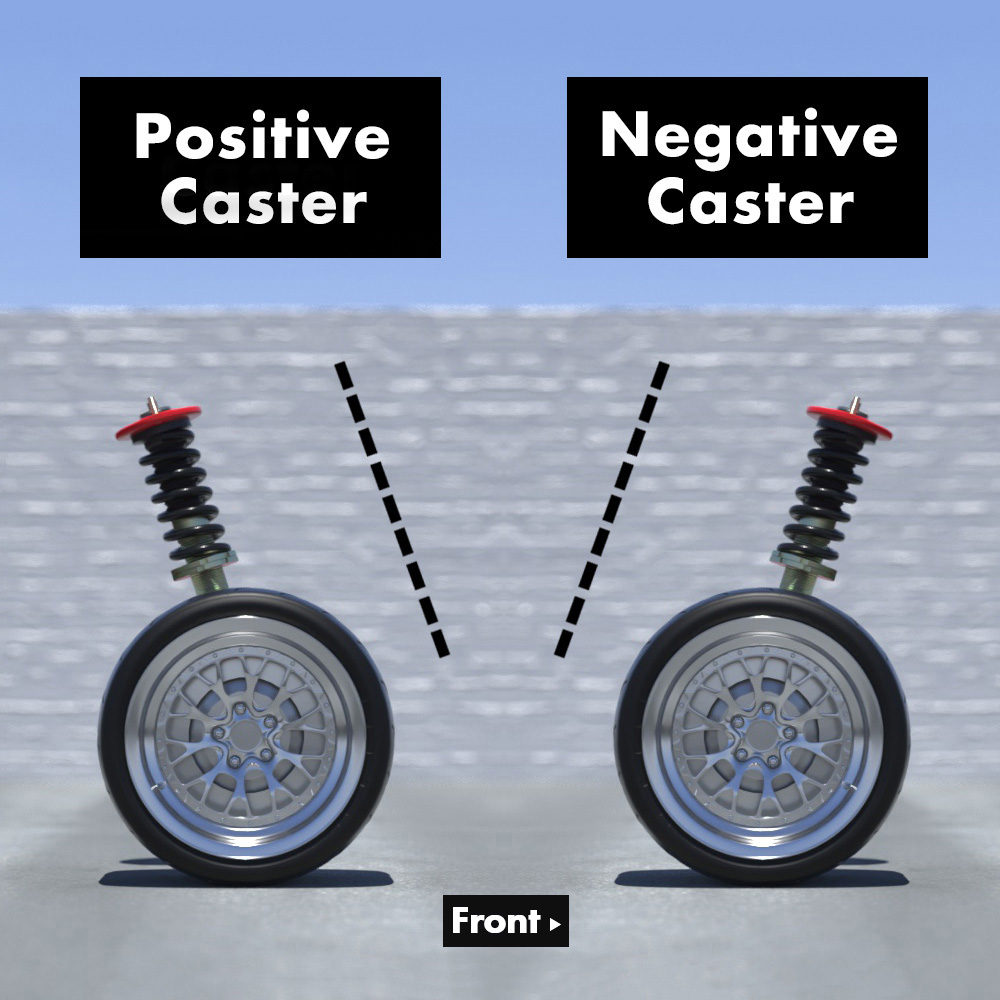
Caster’s main effect is the camber gain that results from turning the wheels. Because their pivot angle is not straight up and down, turning the wheel makes them appear to turn to the side and downward at the same time. Increases in caster generally improve straight line stability and cornering, but at the cost of more steering effort. In most cases, especially if the vehicle has power steering, maximum caster is the target setup. Like camber, caster angle is commonly adjusted via eccentric bolts or camber/caster plates.
ALIGNMENT AT HOME
Once you have a grasp on the effects of alignment settings, you can tackle the adjustments at home. The tools require some investment to get started, but you also will have full control over your vehicle setup and the ability to make changes at the race track if the need arises. While the pricier items like turn plates and laser alignment tools can be daunting, a set of toe plates and a camber gauge can be found for just a few hundred dollars and will be more than plenty accurate. With the proper tools and know-how, you can shoot for the small setup changes at your own convenience, and fine tune your car alignment to perfection.
